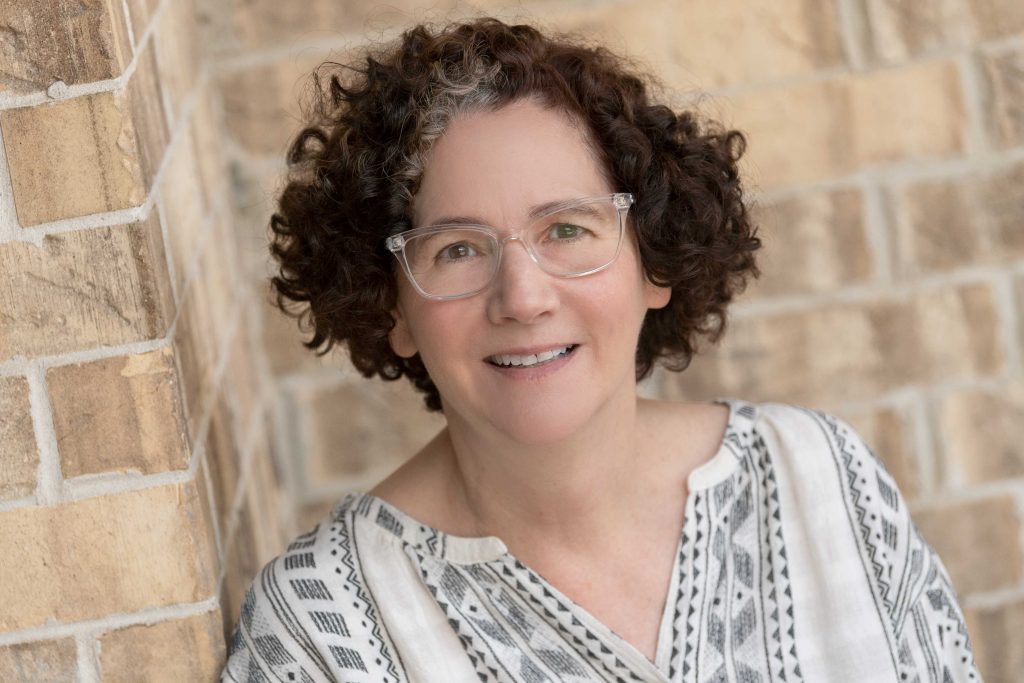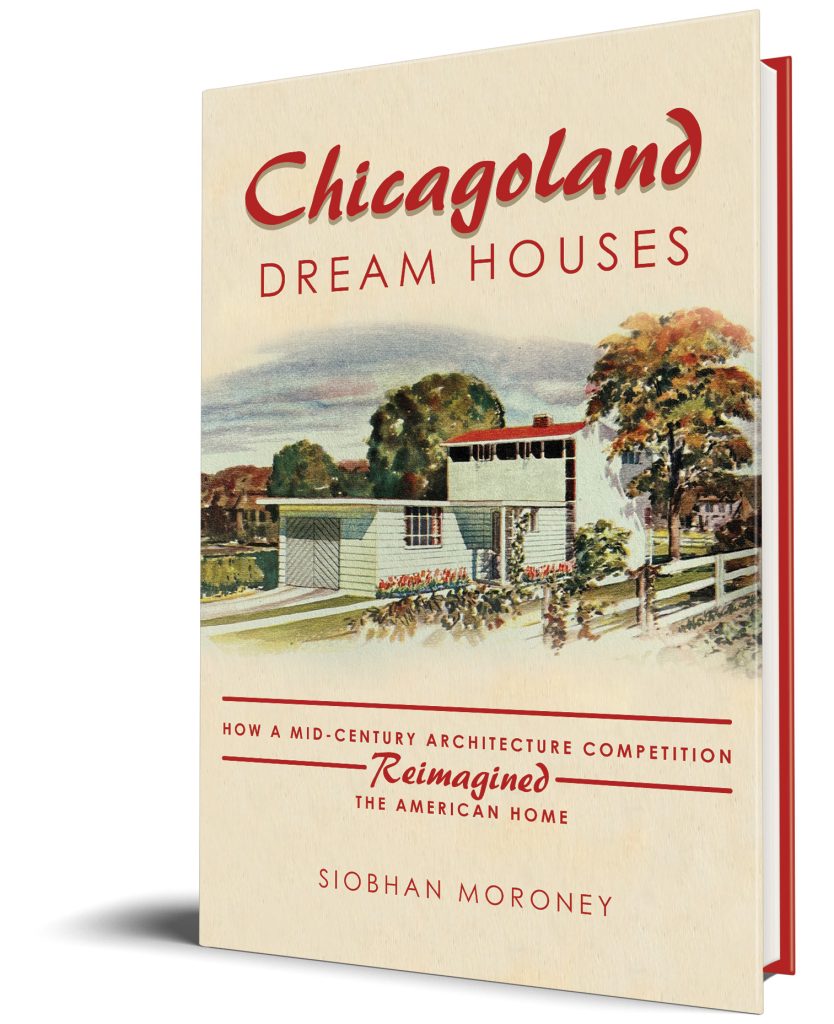Siobhan Moroney, author of Chicagoland Dream Houses: How a Mid-Century Architecture Competition Reimagined the American Home, answers questions on her new book.
Q: Why did you decide to write this book?
I never set out to write a book. I had run across the competition and was curious about it. Finding there was virtually no historical record other than what was covered contemporaneously in the Tribune, I started writing up a history of the competition. Initially, I thought it might be an academic article, but at the end of the summer (that’s when I have time to devote to scholarship) I had more questions. So I went after it again the following summer. It took a few years to realize that it really was a story that could be book-length.
Q: What is the most interesting discovery you made while researching and writing your book?
Locating houses built from winning designs were the real dance-a-jig-in-my-office moments.
Q: What myths do you hope your book will dispel or what do you hope your book will help readers unlearn?
In order of no importance . . .
1. There was a real and serious housing crisis in the Depression and WWII that even worsened after the war. Chicago had, by one account, 100,000 homeless vets. (Not homeless as in on the streets, but homeless in that they lacked proper housing for them and their families.)
2. Nobody expected the post-war baby boom, but they did expect the post-war housing boom.
3. The post-modern architecture that everybody loves now was viewed quite skeptically when it was new. House buyers were conservative and thought the new style was too risky an investment, plus banks and lenders were dubious.
4. House standards change. The primary bedroom/suite seems intuitive now, but wasn’t always. Kids used to routinely share bedrooms; now they don’t. The garage used to be an afterthought; now it’s integral to house design.
5. While we think of modern houses as a kind of style (window walls, flat roofs, concrete and steel), we can also think of modern in terms of interior design and usage. Even a traditionally-styled house, like a colonial or Cape Cod, if built in the mid-century is “modern” because the house was adapted to the way that people wanted and expected to live.
6. Buying a house a century ago was a very different experience from what it is now. Today, most contact an agent, who shows you properties that match your needs and wants and budget. Back then, you bought a lot, chose a house design from a catalog, and had it built; this was true for even middle class homeowners.
Q: Which part of the publishing process did you find the most interesting?
In my experience, it was fast; I’m not sure that’s universal. My acquisition editor at University of Illinois Press, Martha Bayne, got back to me quickly, got super quick turn around on preliminary reviews, got super quick turn around on final reviews. The production process is longer than I thought it would be, on the other hand. From the time I submitted final product (prior to copy editing) to launch date is about 15 months.
Q: What is your advice to scholars/authors who want to take on a similar project?
As a tenured professor, I had the luxury of spending a lot of time on the project. I had a lot of institutional support, too. Not everybody has that. Keeping that in mind, I’d still advise scholars to pursue what interests them. If you think it’s a story worth telling, there’s a good chance someone else will agree.
Q: What do you like to read/watch/or listen to for fun?
Chicago is a great place for the performing arts. In a couple of weeks I will spend a 48-hour period where I go to see a Second City revue, see the touring company perform Hadestown, and attend a Chicago Symphony Orchestra concert.

Siobhan Moroney is an associate professor of politics and the chair of American Studies at Lake Forest College.

